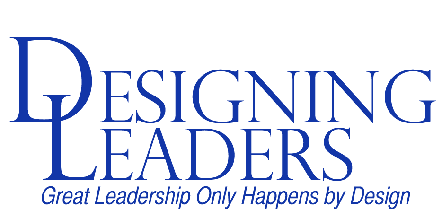Training and Education
Some leaders say they want to provide training for their employees. Others say they focus on education. Very often, they do not recognize the difference between the two. But once they do, they realize their employees can often benefit from both.
Training tends to focus on skills. It is about how to do something correctly, mastering a particular way of doing things. It involves a lot of memorization and repetition. Training tends to be pretty narrowly focused, with specific, measurable goals. Certification programs are one good example…students are working to understand how to do a specific function, such as programming in a particular language, and do so in a way that can be measured so they can pass a standardized test to see if they meet the minimum level of knowledge.
Education, on the other hand, is really more about thinking. Students learn about different approaches (consider the differences between anthropology and chemistry), different styles of thinking, solving ill-defined problems, and more. Good learning should create a desire for more learning, so it becomes a never-ending process, as people are able to adapt to the evolving world around them and understand how they fit into it. A bachelor of arts programs, for instance, is more about learning how to learn than it is about preparation for a specific job. Someone coming to you with a B.A. may not have all the job skills you desire, but they have shown the ability to learn.
In short, training helps you understand how to do a task, while education helps you understand why and when to do it. Education helps you be a better planner, for example, while training helps you put that plan to work.
In the knowledge economy, both types of learning are important. Think about graphic designers in an advertising firm. They need training in specific technical skills, such as drawing, using software, photography, and maybe others. But they also need education to broaden their worldview and help them find inspiration, and to view things from the diverse perspectives of different target audiences. Just one or the other will not work…they really need both.
When it comes to getting the right training and education for your employees, you may have to rely on them to tell you what they need. Unless you’re in the same specific field as them, you might not understand what they really need. Have them do some investigation to determine what will make them better able to support your organization’s goals (which means, by the way, that your organization has to have clear goals, and it also needs the employees to know and understand them). In an ideal world you will have someone whose sole job is to be a training and education manager for your company, and they can work with leaders and employees to figure out the best programs and find a way to make it happen, within the resources of the firm.
On that last note, let’s make one more important point: if you feel you cannot spare any of your people for any professional training or education, then you probably have too few people to begin with. For your organization to be successful your employees should be continuously learning, through formal and informal means, so you need to have enough people to cover your workload while still taking time to improve your workforce.
You should encourage learning within your workforce, and if you have employees who have no interest in continuing to improve their skills or broaden their minds, then perhaps you should be looking for some new employees. Training and education are not options that you can do when you decide you have the chance…they are instead the keys to future success for your company.
- Posted by
 Designing Leaders
Designing Leaders - Posted in Employee Development
 Feb, 18, 2015
Feb, 18, 2015 Comments Off on Training and Education
Comments Off on Training and Education
Categories
- Book Reviews
- Change
- Communication
- COVID-19
- Creativity & Innovation
- Culture
- Diversity & Inclusion
- Employee Development
- Ethics
- Free Agents
- Health and Balance
- Leader Development
- Leading
- Management
- New Leaders
- Planning
- Recruiting and Retention
- Uncategorized
Archives
- August 2020
- July 2020
- June 2020
- October 2019
- September 2019
- August 2019
- July 2019
- June 2019
- May 2019
- March 2019
- February 2019
- January 2019
- December 2018
- November 2018
- October 2018
- September 2018
- August 2018
- July 2018
- June 2018
- May 2018
- April 2018
- March 2018
- February 2018
- January 2018
- December 2017
- November 2017
- October 2017
- September 2017
- August 2017
- July 2017
- June 2017
- May 2017
- April 2017
- March 2017
- February 2017
- January 2017
- December 2016
- November 2016
- October 2016
- September 2016
- August 2016
- July 2016
- June 2016
- May 2016
- April 2016
- March 2016
- February 2016
- January 2016
- December 2015
- November 2015
- October 2015
- September 2015
- August 2015
- July 2015
- June 2015
- May 2015
- April 2015
- March 2015
- February 2015
- January 2015
- December 2014
- November 2014
- October 2014


 Feb, 18, 2015
Feb, 18, 2015